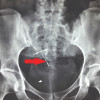
 IJCP Editorial Team
IJCP Editorial Team
Interventional Radiology in Gynecology and Obstetrics Practice
Interventional radiology is an invasive procedure requiring clinical knowledge, non-vascular and vascular technical interventional ability, as well as imaging skills.
This article evaluates the different precautions that need to be reinforced for interventional radiology in gynecology and obstetrics – emphasizing on patient safety
Patient safety is the supreme concern in any medical procedure. Potential failures occurring in interventional radiology can be attributed to planning and communication errors, as well as equipment unavailability. These can be prevented by effective teamwork and adequate planning prior to the procedure. Using a safety checklist is an effective way to minimize errors and thereby preventing adverse events.
Stringent vigilance and following a safety checklist before interventional radiology reduces the chances of human error related to important steps during patient preparation, intraoperative, and post-operative care.
Interventional radiology procedures, although invasive, are excellent alternatives to surgical techniques in the management of gynecological and obstetric diseases. However, potential errors are not uncommon. During such procedures, preprocedural planning and intraprocedural organization is important for time management and to ensure patient safety. For this, the use of safety checklists may have an important role for ascertaining execution of all the steps, and to avoid missing out on intraprocedural care, and postoperative care.
In the current times, digital patient information systems can generate more extensive checklists that offer information and links to other sources. These aid in establishing a safety culture that enhance the success of safety checklists. Safety education should be imparted to healthcare professionals, along with behavioral interventions for ensuring dedicated teams and executive support culture.
Source: Seminars in Ultrasound, CT, and MR. 2021 Feb; 42(1): 104–112. doi: 10.1053/j.sult.2020.09.004

IJCP Editorial Team
Comprising seasoned professionals and experts from the medical field, the IJCP editorial team is dedicated to delivering timely and accurate content and thriving to provide attention-grabbing information for the readers. What sets them apart are their diverse expertise, spanning academia, research, and clinical practice, and their dedication to upholding the highest standards of quality and integrity. With a wealth of experience and a commitment to excellence, the IJCP editorial team strives to provide valuable perspectives, the latest trends, and in-depth analyses across various medical domains, all in a way that keeps you interested and engaged.












Please login to comment on this article